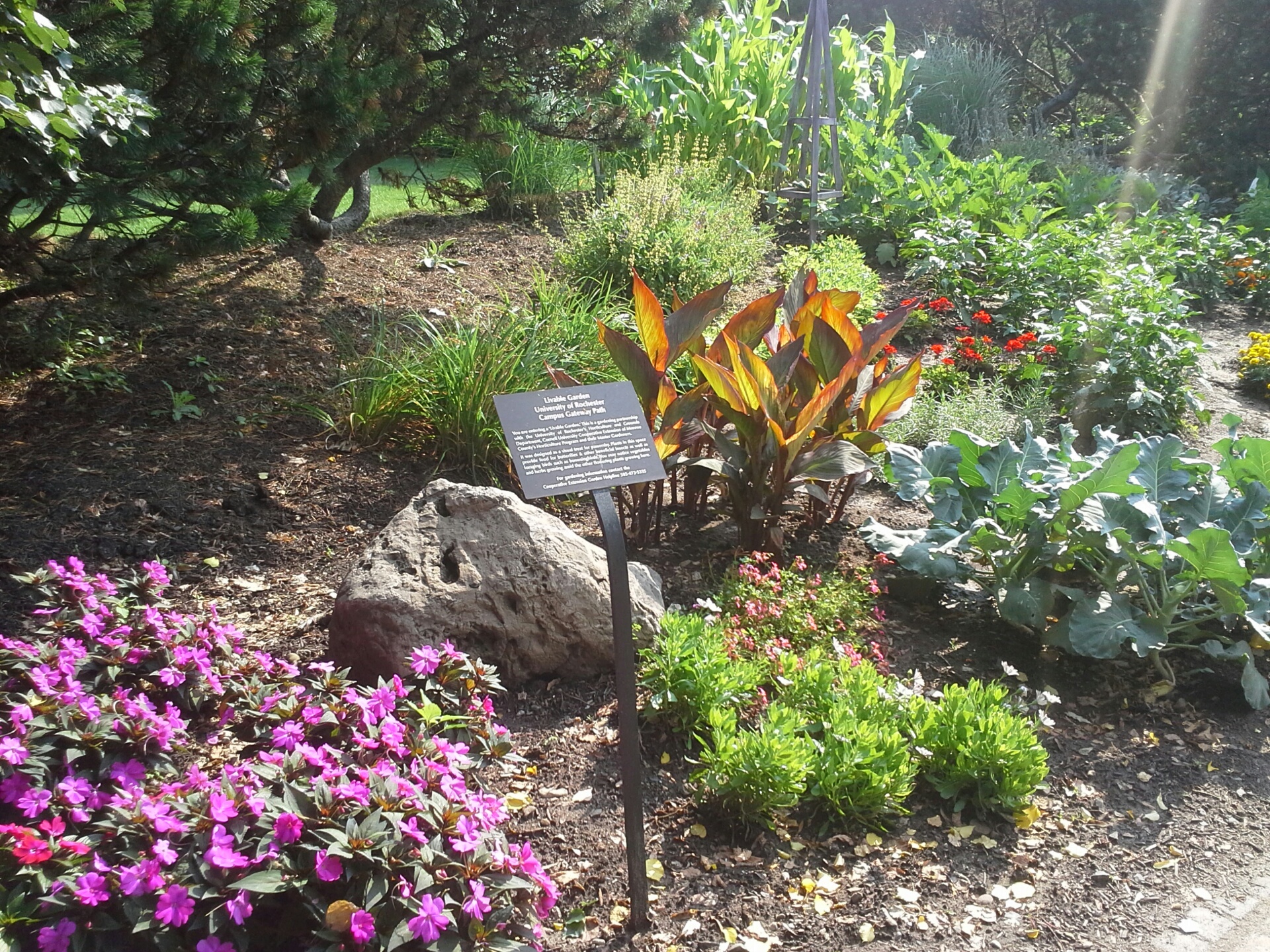If you frequent the path that connects the Medical Center to Intercampus Drive of the River Campus, you probably noticed a vivacious pumpkin patch growing along the fence this fall season. These were planted as part of the “Livable Garden”, which serves as a live demonstration of how various types of plantings can serve multiple purposes among the surrounding ecosystem.
Roughly five years ago Manager of Horticulture and Grounds, Dan Schied, brainstormed the idea of installing a Livable Garden while having a conversation with the master gardeners of Cornell Cooperative Extension of Monroe County. His goal, which quickly came to fruition, was to create a demonstration of a communal, edible garden that would simultaneously benefit the earth and community members. The campus gateway path was chosen as the location to engage members of the University community while being a “visual treat for passersby” as stated on the garden’s plaque.
 The flowering plants in the space provide food for beneficial insects, such as butterflies, as well as foraging animals. The garden also incorporates plants edible for human consumption including a variety of herbs, including thyme, sage, rosemary, and basil. There are even vegetables such as eggplant, broccoli, tomatoes, beans, corn, and this year – pumpkins! Grown from seed right along the garden’s fence, the pumpkin section was a new addition orchestrated by Ron Crandall, a horticulturist here at the University. Mr. Schied says this addition has generated a lot of viewing traffic for the Livable Garden, expressing, “it was not uncommon for me to be driving by and see someone in the garden looking at the pumpkins.”
The flowering plants in the space provide food for beneficial insects, such as butterflies, as well as foraging animals. The garden also incorporates plants edible for human consumption including a variety of herbs, including thyme, sage, rosemary, and basil. There are even vegetables such as eggplant, broccoli, tomatoes, beans, corn, and this year – pumpkins! Grown from seed right along the garden’s fence, the pumpkin section was a new addition orchestrated by Ron Crandall, a horticulturist here at the University. Mr. Schied says this addition has generated a lot of viewing traffic for the Livable Garden, expressing, “it was not uncommon for me to be driving by and see someone in the garden looking at the pumpkins.”
The space does not merely host vegetables and herbs. Flowers also inhabit the garden to both beautify it and illustrate the harmonious ecosystem the cohabitation of flowers and produce can yield. While Schied says they included “traditional annual flowers to make an attractive garden,” edible flowers, such as nasturtium and pansies, were incorporated too. These “can be used in salads, can add flavor to cooked dishes, and can be made into teas or used as a garnish.”
The Horticulture and Grounds department maintains the garden diligently, not only watering it but also checking in on it frequently. Every three weeks the Cooperative Extension of Monroe County comes in to weed it as well.
Ainslee Cunningham (Class of 2014 and former Sustainability Intern for Facilities Team Green) visited the garden proclaiming that it was an excellent “example of how agriculture, plant conservation, and landscape art can all coexist and serve a functional purpose for the entire community.”
For some useful tips on how to create, maintain, and harvest your own edible garden, click here.
Written by Julie Elliot, 2015


Yes! In addition to the environmental benefits, gardening offer is very beneficial to our overall well-being.
I live in an apartment and I have a Tomato, mint and basil plants in my balcony. Its a small garden but it gives be immense happiness in maintaining it. I believe Gardening is a therapy for nature lovers
Having a garden means many things and most nature lovers take care of their garden. To protect a garden, there is a first and vital condition is set the fence around the garden. Some fence services are so creative in the fence work.